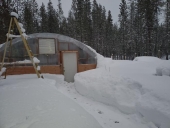
 1
1




 2
2





"Study books and observe nature; if they do not agree, throw away the books." ~ William A. Albrecht

 1
1




List of Bryant RedHawk's Epic Soil Series Threads We love visitors, that's why we live in a secluded cabin deep in the woods. "Buzzard's Roost (Asnikiye Heca) Farm." Promoting permaculture to save our planet.





















 2
2




List of Bryant RedHawk's Epic Soil Series Threads We love visitors, that's why we live in a secluded cabin deep in the woods. "Buzzard's Roost (Asnikiye Heca) Farm." Promoting permaculture to save our planet.
























List of Bryant RedHawk's Epic Soil Series Threads We love visitors, that's why we live in a secluded cabin deep in the woods. "Buzzard's Roost (Asnikiye Heca) Farm." Promoting permaculture to save our planet.
 2
2




Finally! An Online Garden Master Course for permies!
How Permies.com Works



|
The fastest and most reliable components of any system are those that are not there. Tiny ad:
Back the BEL - Invest in the Permaculture Bootcamp
https://permies.com/w/bel-fundraiser
|




